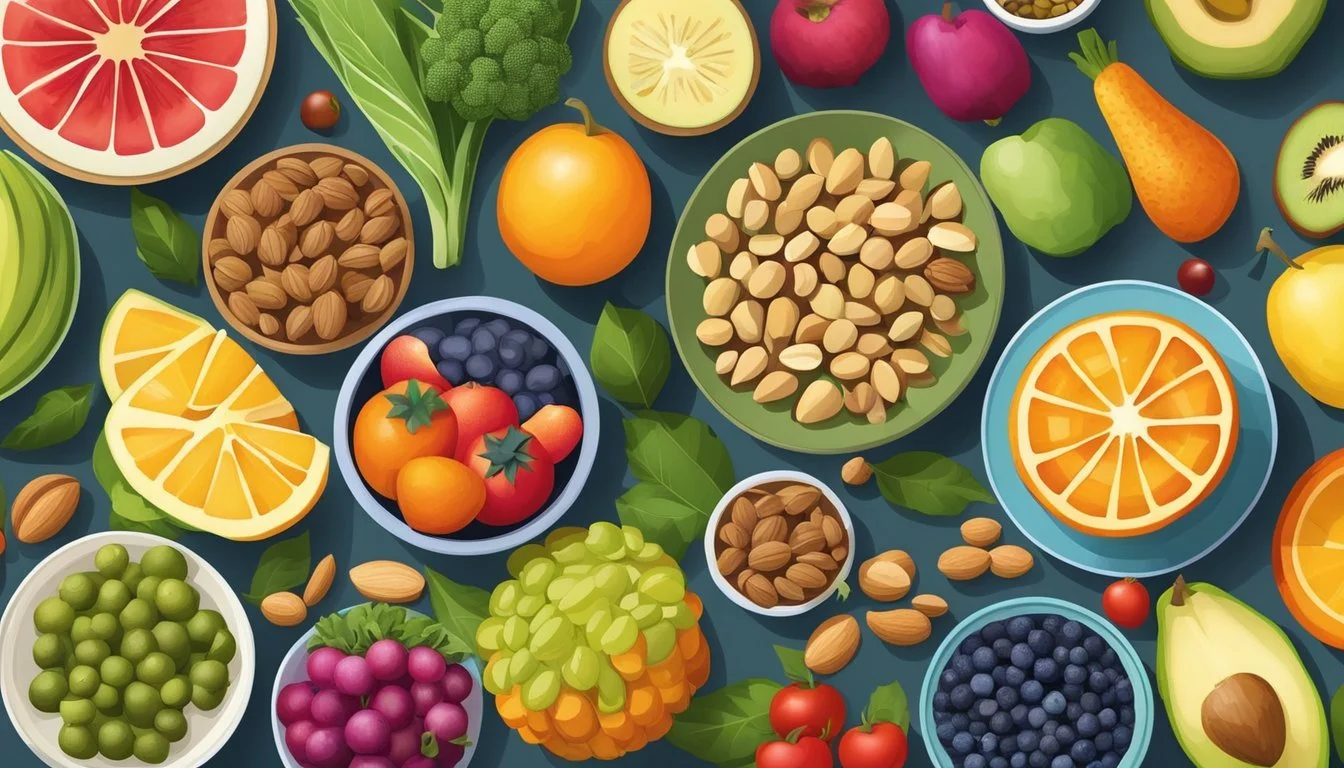The Truth About the Raw Food Diet
Evaluating Nutritional Adequacy
The raw food diet, often referred to as raw foodism or raw veganism, is centered on the consumption of food that is unprocessed and typically not heated beyond 118 degrees Fahrenheit. Proponents argue that this dietary approach retains the natural enzymes and nutrients that are often lost during cooking, which can contribute to better health and increased vitality. Critics, however, raise concerns about potential nutritional deficiencies, such as in protein, calcium, and iron, which are common in diets lacking in animal products and grains. It's essential to understand both the benefits and limitations of this diet to evaluate its nutritional adequacy.
Adherents of a raw food diet typically consume a variety of fruits, vegetables, nuts, seeds, and sprouted grains, which are indeed rich sources of vitamins, minerals, and fiber. This plant-based approach to eating aligns with some aspects of veganism and vegetarianism, emphasizing food that has undergone minimal processing. However, the strict exclusion of all cooked foods differentiates the raw diet from a general plant-based or vegetarian diet and poses unique challenges in meeting all of the body's nutritional needs.
It is critical for individuals considering a raw food diet to plan carefully and be informed about how to obtain a balance of macro and micronutrients that supports overall health. While raw foodism aims to promote wellness through a natural diet, the key to its success lies in a well-thought-out approach that ensures a varied intake of essential nutrients. Whether a raw food diet can be nutritionally complete depends on the inclusion of a diverse array of foods and, in some cases, may require fortification or supplementation to fill any gaps in nutrition.
Nutritional Basics of a Raw Food Diet
Exploring a raw food diet requires understanding its nutritional content, which includes ensuring adequate intake of essential vitamins and minerals, achieving a balanced macronutrient profile, and considering the advantages of consuming whole, unprocessed foods.
Essential Vitamins and Minerals
A raw food diet typically abounds in vitamins and minerals, as it includes a variety of fruits and vegetables. These items are rich in vitamin C, antioxidants, and phytochemicals like lycopene. However, it may be deficient in vitamin B12, found mainly in animal products, and minerals such as calcium and iron, which are less bioavailable in plant-based sources.
Macronutrient Balance
Raw foodists aim to balance macronutrients from natural sources: carbohydrates from fruits and vegetables, proteins from nuts, seeds, and legumes, and healthy fats from avocados, nuts, and seeds. This can be more challenging than in diets that include cooked foods, as certain methods of cooking enhance the digestibility and availability of these nutrients.
Understanding Enzymes in Raw Foods
Proponents of raw foodism believe that keeping food in its natural, uncooked state preserves enzymes that aid in digestion. Although the body produces its digestive enzymes, it's argued that consuming raw foods might minimize the body's workload.
Importance of Variety in Raw Food Selection
It's necessary for raw foodists to eat a wide range of raw plants to cover their nutritional needs. A diverse selection ensures a broad spectrum of nutrients, helping to prevent deficiencies.
Raw Food Diet and Phytochemicals
Phytochemicals are abundant in unprocessed foods and may offer health benefits, including reduced risk of chronic disease. These include antioxidants which can neutralize harmful free radicals.
Advantages of Whole and Unprocessed Foods
Consuming whole, unprocessed, and organic foods can reduce exposure to preservatives and artificial additives. Whole foods also provide dietary fiber, which supports a healthy digestion process.
The Role of Fermented Foods
Fermented foods (What wine goes well with fermented foods?) like kimchi, sauerkraut, and certain raw dairy products contribute probiotics to the diet, which can enhance gut health.
Food Preparation Techniques: Juicing, Blending, and More
Raw food preparation techniques such as juicing, blending, soaking, sprouting, and dehydrating are used to create variety and enhance nutrient intake without cooking.
Raw vs. Cooked: Nutrient Retention
Raw foodists claim that not cooking foods helps retain sensitive nutrients like vitamin C and certain B vitamins, which can be reduced through cooking. However, certain foods, like tomatoes, release more lycopene when cooked.
Comparing Plant-Based and Animal-Based Nutrients
Plant-based diets can provide all necessary nutrients, although those following a raw diet may need to be more mindful of nutrients typically found in animal products, like protein, vitamin B12, and iron.
Convenience and Practicality of Following a Raw Food Diet
The raw food diet can require more preparation time due to the necessity of processing such as soaking or sprouting. Its practicality depends on individual lifestyle and commitment.
Health Risks and Food Safety Concerns
Food safety is a concern with a raw food diet due to the risk of food-borne illnesses from raw or undercooked animal products and contamination in raw vegetables and fruits.
Food Allergies and Raw Diets
Raw diets can be altered to accommodate food allergies and intolerances, although careful planning is required to ensure nutritional adequacy.
Addressing Common Misconceptions
It is a misconception that a raw food diet provides all necessary nutrients in their most optimal form. Science-based evaluations indicate that while a raw diet has benefits, it may be lacking in certain nutrients, and supplementing is often recommended.
Health Outcomes and Clinical Evidence
The raw food diet, with its emphasis on unprocessed and uncooked plant-based foods, has notable effects on various health outcomes. Clinical evidence shows differing impacts on weight management, chronic diseases, and overall nutrient intake.
Weight Management and Body Composition
Individuals on a raw vegetarian diet often experience significant weight loss and reductions in body fat. Studies report an average weight loss of 9.9 kg in men and 12 kg in women over a period of 3.7 years. The body mass index (BMI) tends to be lower in those consuming a higher percentage of raw foods.
Digestive Health and Fiber Intake
Raw diets are high in fiber, contributing to improved digestion and promoting intestinal health. The intake of raw fruits and vegetables ensures an abundant supply of fiber that can help regulate the digestive system.
Impact on Chronic Diseases
The raw food diet has been associated with a decreased risk for chronic diseases, such as cardiovascular disease, due to the high consumption of phytochemicals and nutrients from fruits and vegetables. However, the extent of the impact varies among individuals.
Immune System and Nutrient Absorption
While a raw diet is rich in many vitamins, there can be challenges in nutrient absorption, specifically for vitamin B-12 and calcium, which are less available in plant-based, uncooked foods. This can potentially affect the immune system and overall health.
Bone Health and Mineral Density
There is concern regarding bone health and mineral density due to possible insufficient intake of calcium and vitamin D, which are crucial in preventing osteoporosis. Raw food dieters need to pay careful attention to these nutrients to avoid long-term bone health issues.
Energy Levels and Mental Clarity
Proponents of the raw food diet claim heightened energy levels, mental clarity, and improved focus. These benefits are often attributed to the natural enzymes and high nutrient content available in raw foods.
Skin Health and Appearance
Consuming a diet high in raw vegetables and fruits can improve skin health and complexion, possibly due to the detoxifying effects of such foods and the presence of antioxidants that combat inflammation.
Longevity and Quality of Life
Data on the raw food diet's impact on longevity and quality of life are inconclusive. While some raw foodists report increased well-being, comprehensive long-term studies are required to substantiate claims related to lifespan extension.
In summary, the raw food diet has potential health benefits and risks. Weight loss and improved body composition are common, although the diet might lack essential nutrients if not carefully planned. It's crucial for individuals to tailor their diet to their specific health needs and consider consulting healthcare professionals for guidance.
Dietary Challenges and Considerations
Adopting a raw food diet introduces various nutritional and lifestyle challenges that require careful consideration to maintain health and social wellbeing.
Risks of Nutrient Deficiencies
A raw food diet can lead to deficiencies in key nutrients if not properly managed. Essential elements that might fall short include iron, calcium, vitamin D, and vitamin B12. These nutrient deficiencies can result from the exclusion of cooked foods and limited sources of these nutrients in a raw plant-based diet.
The Significance of Meal Planning
Meal planning is essential for anyone on a raw food diet to ensure a balanced intake of nutrients. It demands attention to including a variety of raw foods that provide a broad spectrum of nutrients, and may entail the use of supplements to fulfill dietary needs.
Managing Social and Dining Out Situations
Adapting to a raw food diet significantly affects one’s social life and dining out experiences. It often requires explaining dietary restrictions to friends and restaurant staff, as well as researching establishments in advance that can cater to a raw food regimen when traveling.
Transitioning from a Standard Diet
Transition strategies are vital when shifting from a traditional diet to a raw food lifestyle. Gradual changes and incorporating a diversity of raw foods can help mitigate shock to the system and establish sustainable habit changes.
Economic and Environmental Aspects
The cost and affordability of maintaining a raw food diet can vary greatly. While some raw foods might be more expensive, planning and sourcing can reduce expenses. Sustainability and environmental impact are often cited as benefits of a raw food diet, due to lower energy usage and a potential decrease in packaging waste compared to processed foods.
Raw Food Diet Varieties and Adaptations
The raw food diet embraces a myriad of variations, adjusted to fit individual lifestyles, cultures, and nutritional requirements, demonstrating a spectrum of adaptability in dietary practices.
Raw Till 4 and Other Partial Raw Diets
Raw Till 4 is a diet that combines cooked vegan dinners with raw meals during the day. This approach allows for nutritional variety and can make the transition to raw foods more manageable. Partial raw diets like these offer increased flexibility while still providing the benefits of high raw food consumption.
Raw Food Diet in Different Cultures and Climates
Cultural differences and climate considerations play significant roles in the adaptation of raw food diets. Colder climates may see fewer raw food adherents due to the body's need for more energy-dense foods. Conversely, tropical cultures often incorporate a higher percentage of raw foods naturally, due to the abundant availability of fresh produce.
Hybrid Diets: Combining Raw and Cooked Elements
Hybrid diets are a blend, incorporating both raw and cooked foods. Such diets maintain the enzyme-rich benefits of raw foods, while including cooked elements for greater variety and warmth. These diets offer greater adaptation to personal health needs and social situations.
Raw Foodism and Athletic Performance
Athletes may adopt a raw food diet with considerations for sports nutrition. While this diet can provide ample vitamins and antioxidants, ensuring sufficient calorie and protein intake is crucial. Athletes might need to plan carefully to support athletic performance and recovery.
Raw Diets for Different Life Stages
Life stages, such as development, pregnancy, and geriatric nutrition, necessitate tailored raw food diets. During pregnancy, for example, additional care must be taken to meet increased nutritional needs. Similarly, for the elderly, raw diets must ensure ease of digestion and adequate nutrient density.
Conclusion
Evaluating the nutritional adequacy of a raw food diet reveals that it has both benefits and potential drawbacks. Individuals on this diet often consume more fruits and vegetables, which can lead to a higher intake of certain vitamins, minerals, and dietary fiber. The diet's emphasis on whole, unprocessed foods supports a nutrient-dense approach to eating.
However, concerns arise with long-term adherence to a strictly raw food regimen. Key nutrients often lacking in a raw food diet include:
Protein: Many plant-based sources of protein are not consumed raw.
Calcium: Without dairy, careful planning is needed to ensure adequate intake.
Vitamin B12: Typically found in animal products, a supplement may be necessary.
Nutrient deficiencies can be a risk without careful planning. Further, reliance on a raw diet alone may make it challenging to meet the caloric and protein needs of some individuals, particularly those with higher energy demands.
The takeaway for anyone considering a raw food diet is to prioritize a balanced and varied intake of foods. Consulting a healthcare professional or a registered dietitian can help mitigate any nutritional gaps and personalize the diet to one's health needs.
In summary, one can achieve a nutritionally adequate diet through a well-planned raw food approach, but it requires diligence, education, and potentially, supplementation to ensure complete nutritional balance.




